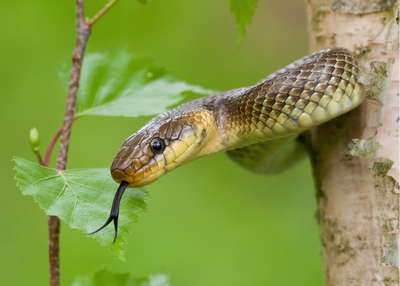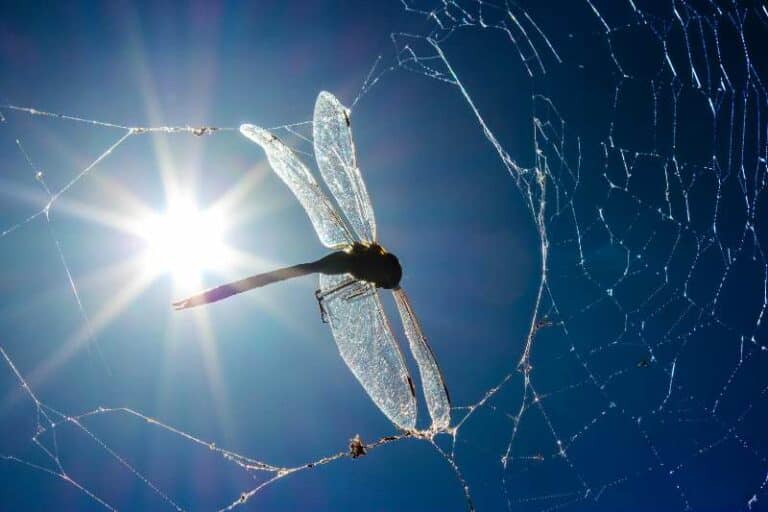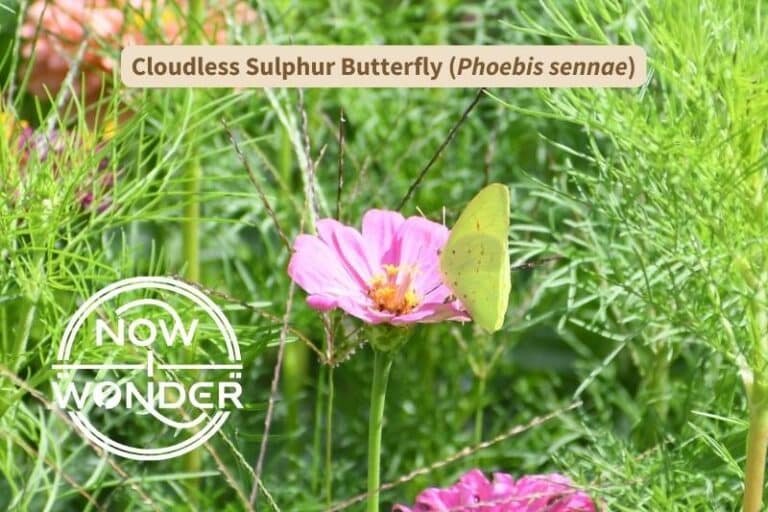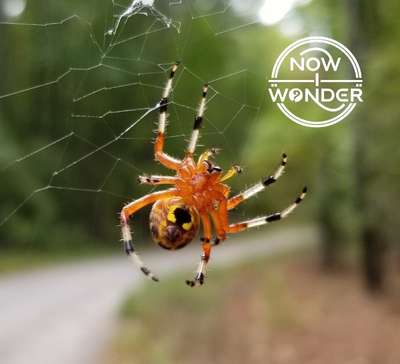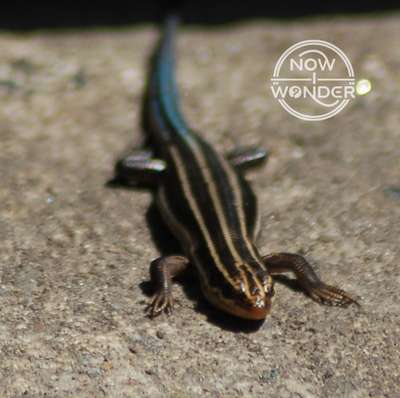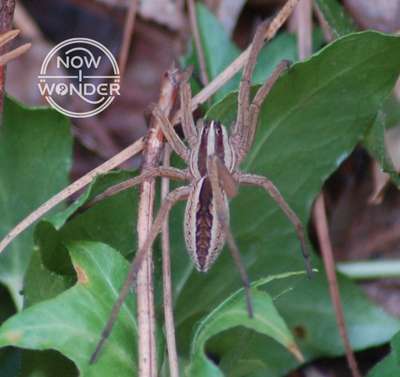Every spring and summer across the eastern United States, a profusion of bulky beetles takes flight. Known collectively by their common name of “June Bugs” or “June Beetles”, they buzz loudly through the air in large numbers. Many people are familiar with Japanese Beetles as well and wonder if Japanese Beetles and June Bugs are the same thing. If you wonder about this too, this post will help.
Japanese Beetles (Popillia japonica) are smaller than June Bugs, are green and bronze, and active during the day. Brown June Beetles (Phyllophaga spp.) and the Green June Beetle (Cotinis nitida) are larger than Japanese Beetles, are mostly all brown and all green respectively and nocturnal.
All three insects are beetles within the Order Coleoptera and Family Scarabaeidae so have the basic “beetle” characteristics in common. But they are classified in different genera because they differ from one another in some important ways. Understanding their differences can make watching these interesting insects a lot more fun.
Japanese Beetles are multi-colored, June Beetles are all one color
Japanese Beetles are always a metallic green with bronze wing coverings. The hard wing coverings, called elytra, are edged in black and don’t quite cover the end of its abdomen. Additionally, their sides are edged in tufts of white hair, with five tufts on each side and two tufts on the end of their abdomens.
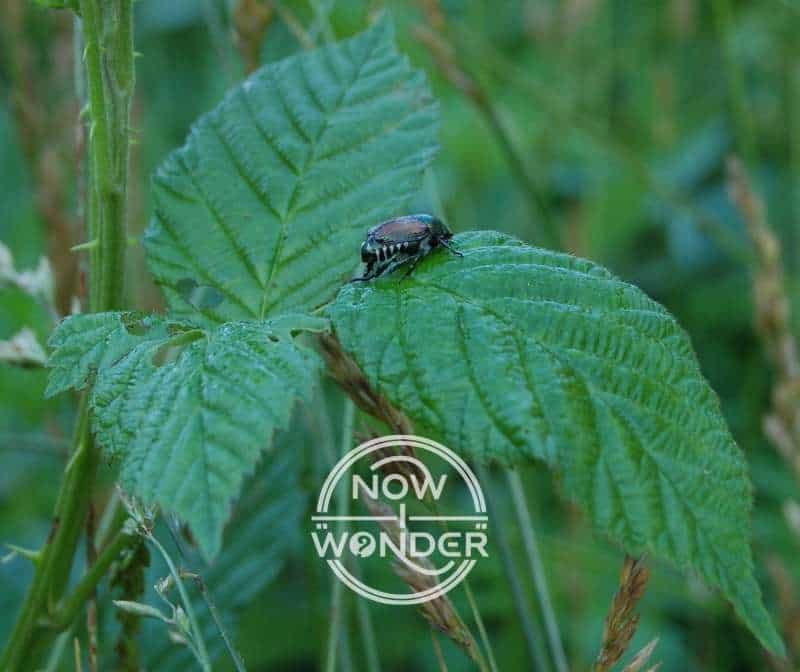
Brown June Bugs are exactly that – brown. Species within this Genus range in color from milk chocolate brown to rich chestnut through to a deep mahogany. Different species can have subtle stripes or shadings of brown. Some are covered in tiny hairs giving them a matte appearance but the thorax and elytra on others are smooth and shiny.
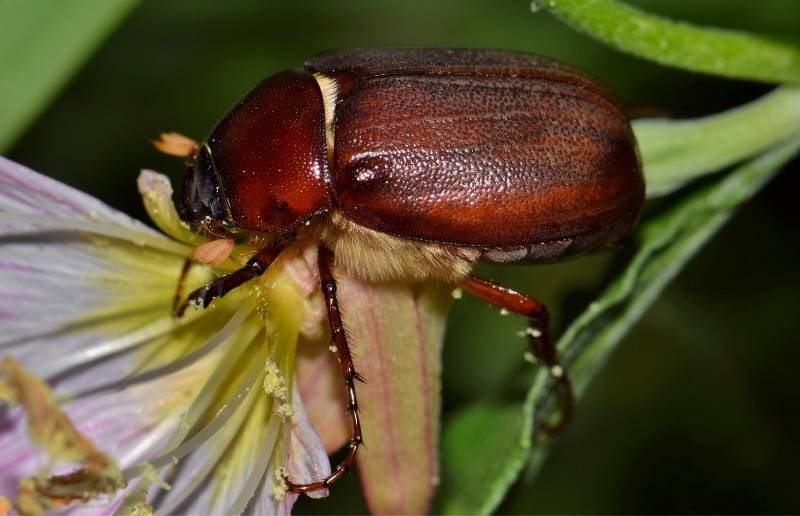
Green June Beetles are descriptively named also. These insects are bright green and can appear metallic in certain lights. The edges of the Green June Bug’s elytra and the pointed triangular area behind the head (called the “pronotum”) can be yellowish brown. The bright coloration makes them very easy to spot in flight but helps them blend into their surroundings when grounded in a grassy area and when feeding on plants. Their bodies are a beautiful combination of greens and browns.
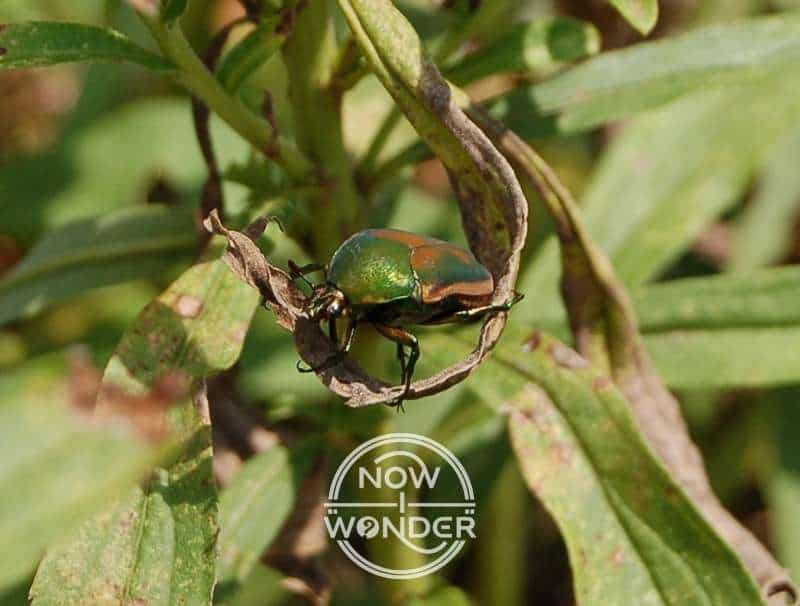
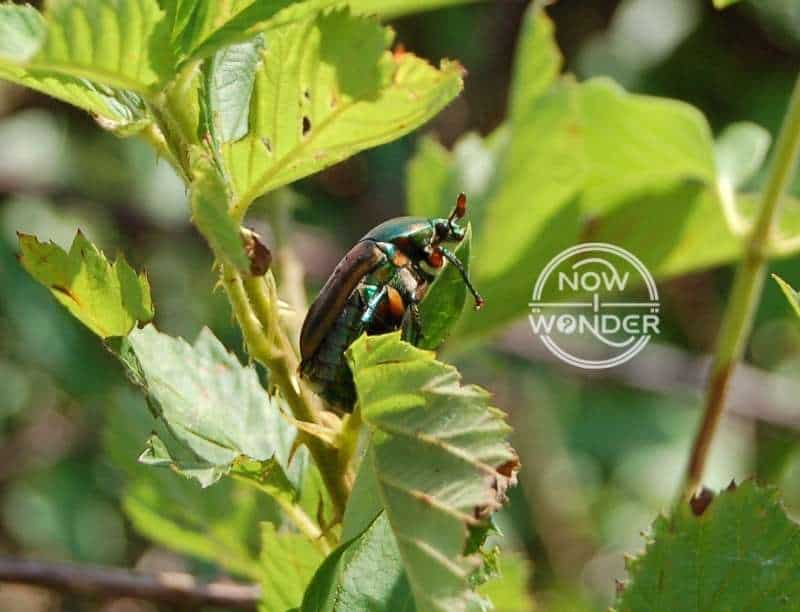
Japanese Beetles are smaller than June Bugs
The Japanese Beetle is the smallest of the three types of insect and is 8-11mm or approximately 0.3-0.4 inches long.
The Brown June Beetle is quite a bit larger with a usual size range of 12-25mm or 0.5-1.0 inches long, depending on the species.
But the Goliath of the group is the Green June Beetle, which is 20-30mm or 0.8-1.2 inches long. This is more than double that of the largest Japanese Beetle and nearly double the size of the smallest average Brown June Bug.
Because the Green June Bug shares the boxy body structure common to most beetles, its body is impressively wide as well, measuring a full 12-13mm, or 0.5 inches, across its widest point at the base of the elytra.
The Green June Beetle is one of the largest commonly encountered members of Family Scarabaeidae. Its size makes these insects very conspicuous during the midsummer and early fall when the adults emerge and are most active.
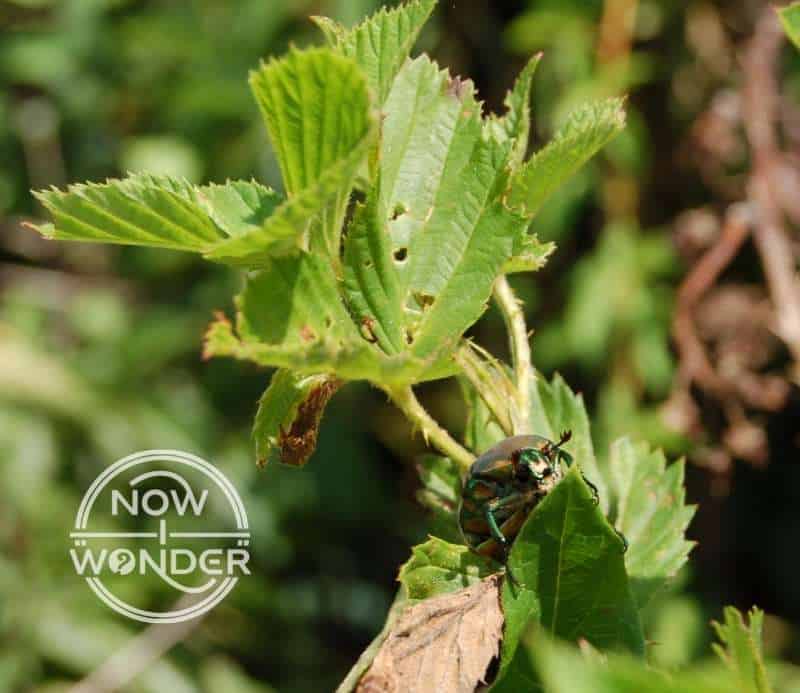
Adults emerge at different times of the year
Adult Japanese Beetles emerge from the ground around May and usually die off in September. At approximately five months, this represents a longer time span than either of the two types of June Bug.
Brown June Beetles are primarily active April to June. The Green June Beetle doesn’t emerge until later in the summer – usually mid-June – and is most prevalent in July and August.
They are active at different times of the day
Japanese Beetles are active during the day, which is known as being “diurnal”.
Both the Brown and Green June Bugs are primarily nocturnal, although they do fly around during the day as well, especially during the times when adults are first emerging from underground.
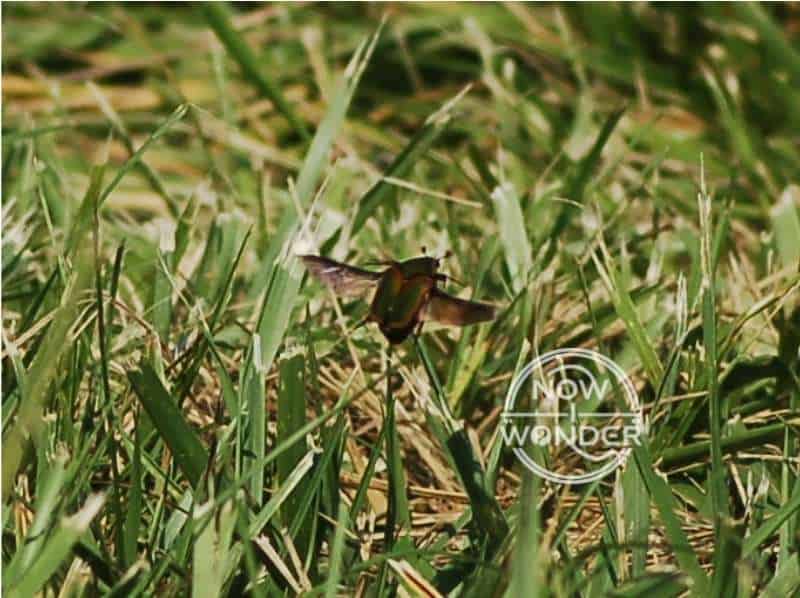
They lay different numbers of eggs
Female Japanese Beetles lay 40–60 eggs per season, while Brown June Beetles only lay an average of 20-50. Green June Bugs lay the most at 60 – 75 eggs per female. The males of each species must fertilize all these eggs in order for them to be viable as the next generation.
Fertilizing and laying this many eggs in a short period of time places a tremendous metabolic demand on these insects, not to mention the energy required to pupate and mate in a short reproductive season. The need to consume enough food to supply the required energy may be one reason for the voracious appetite of these plant pests. They are creatures on a mission and that mission is reproduction.
They eat different foods
Japanese Beetles eat more than 300 different species of plants, many of which have significant economic importance to agriculture in the United States. These beetles consume such a wide variety of plants – both wild grown and cultivated – that they have become one of the most successful and widely distributed plant pests in the country.
Japanese Beetles damage plants by eating their leaves, flowers and fruits to the point where the plants either die outright or become worthless. While they will attack many different plants, corn, cotton, plums, cherries, peaches, apricots, almonds, roses, okra, potatoes, and beans are favorite food sources.
Brown June Beetles are less destructive to plants that humans cultivate than the other two species as they feed primarily on the leaves of deciduous trees like oak.
Green June Beetles also feed on foliage and fruits like Japanese beetles but not so much on flowers. This makes them marginally less destructive than Japanese beetles but they still do a lot of damage every year.
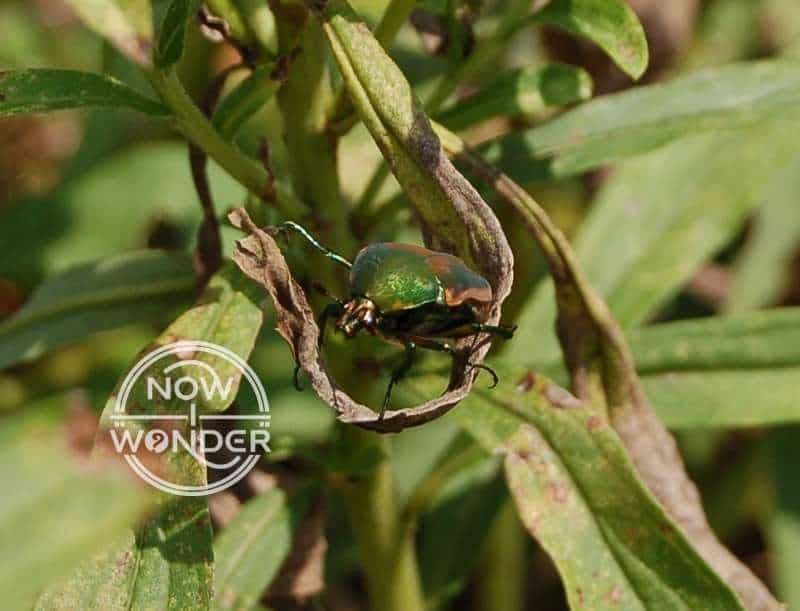
Japanese Beetles, Brown June Beetles and Green June Beetles are only a few of the enormous number of insects classified in Order Coleoptera. The Japanese Beetle and the Green June Bug are individual species while the common name “Brown June Bug” covers many species which are difficult to distinguish unless you are a professional entomologist.
It is easy to tell these insects apart just based on how they look. But appreciating the other ways in which these beetles differ from one another can help you connect more deeply to the natural world.
Related Now I Wonder Posts
For more information about beetles in order Coleoptera, check out these other Now I Wonder posts:
- What makes ladybugs and Japanese beetles different?
- What eats Japanese beetles?
- What is the biggest beetle in North Carolina?
For information about insects in general, check out these other Now I Wonder posts:
- Do insects ever eat spiders? Part 1: Attacks from the air
- Do insects ever eat spiders? Part 2: Attacks from the ground
- Do insects have blood?
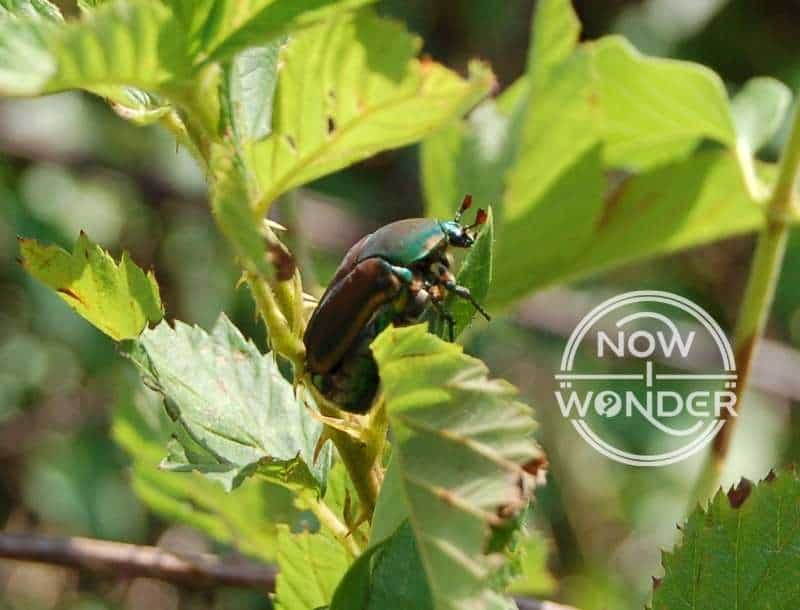
References
“Japanese Beetle.” In Handbook of Vegetable Pests, by John L. Capinera. Elsevier Science & Technology, 2001.
“Green June Beetle.” In Handbook of Vegetable Pests, by John L. Capinera. Elsevier Science & Technology, 2001.
Green June Beetle, Oklahoma State University Extension, Digital Diagnostics, author and publish date unknown. https://extension.okstate.edu/programs/digital-diagnostics/insects-and-arthropods/green-june-beetle-cotinis-nitida/index.html?Forwared=entoweb.okstate.edu/ddd/insects/greenjunebeetle.html
Potter, Daniel A., and Held, David W., eds. 2009. Encyclopedia of Insects. San Diego: Elsevier Science & Technology.

